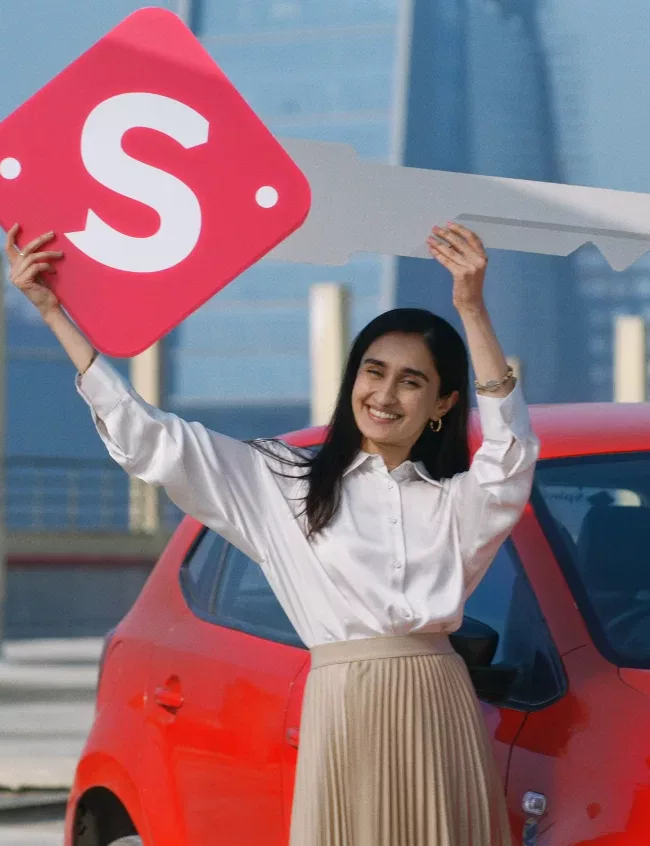Traffic signs play a crucial role in maintaining road safety and ensuring smooth traffic flow. They are designed to provide essential information to drivers, pedestrians, and cyclists on the road. In this blog post, we will take a closer look at traffic signs, their functions, and types, and how to understand them while driving in India. Here are the traffic signs in India:
Also Read – Indian Traffic Signs
What are traffic signs?
Traffic signs are visual representations of information that guide road users. They are designed to communicate important messages to drivers, cyclists, and pedestrians on the road. Traffic signs are an essential component of road safety and are used to control traffic, give directions, warn of hazards, and provide information.
Functions of Traffic Signs
Traffic signs serve several functions on the road. They are designed to provide essential information to drivers, cyclists, and pedestrians, which include:
- Regulating traffic flow: Traffic signs are used to control traffic flow, ensure road safety and prevent accidents.
- Hazard Warnings: Traffic signs warn drivers of potential hazards on the road such as sharp turns, steep inclines, and road works.
- Providing directions: Traffic signs give directions and provide information on the location of destinations, such as hospitals, petrol stations, and airports.
- Conveying rules and regulations: Traffic signs convey rules and regulations that drivers must adhere to while on the road, such as speed limits, no-parking zones, and no-entry zones.
Types of Traffic Signs
Traffic signs can be broadly categorised into three types, mandatory, cautionary and informatory.
Mandatory Traffic Signs
Mandatory traffic signs are designed to communicate rules and regulations that drivers must follow. These signs are usually circular in shape with a white background and a red border. Some examples of mandatory traffic signs include:
Also Read – How To Pay Challan Online
- Stop Sign: This is one of the most common mandatory traffic signs. It indicates that drivers must come to a complete stop at the stop line or crosswalk before proceeding.

- Speed Limit Sign: These signs indicate the maximum speed limit that drivers are allowed to travel on a particular roadway.

- Yield Sign: This sign indicates that drivers must give the right-of-way to other vehicles or pedestrians who have already entered the intersection.
- One-Way Sign: This sign indicates that traffic flows in only one direction on the road or street.
- Do Not Enter Sign: This sign indicates that drivers are not allowed to enter the roadway in the direction indicated by the sign.
- No U-Turn Sign: This sign indicates that drivers are not allowed to make a U-turn in the roadway.
- No Parking Sign: This sign indicates that drivers are not allowed to park their vehicles in the area indicated by the sign.
- Pedestrian Crossing Sign: This sign indicates that drivers must yield to pedestrians who are crossing the roadway.
It is important to pay attention to these mandatory traffic signs and follow their instructions to ensure safe and efficient traffic flow.
Also Read – Documents For Buying A Used Car
Cautionary Traffic Signs
Cautionary traffic signs are designed to warn drivers of potential hazards on the road. These signs are usually triangular in shape with a yellow background and a black border. Some examples of cautionary traffic signs include:
- Slippery When Wet Sign: This sign indicates that the road may be slippery when wet and that drivers should slow down and use caution.
- Pedestrian Crossing Sign: This sign indicates that pedestrians may be crossing the roadway and that drivers should slow down and be prepared to stop.
- Road Narrows Sign: This sign indicates that the road ahead narrows and that drivers should slow down and be prepared to merge if necessary.
- Animal Crossing Sign: This sign indicates that there may be animals crossing the roadway and that drivers should slow down and be prepared to stop if necessary.
- School Zone Sign: This sign indicates that drivers are entering a school zone and should slow down and be alert for children crossing the roadway.
- Construction Zone Sign: This sign indicates that drivers are entering a construction zone and should slow down and be prepared for changes in traffic patterns.
- Low Clearance Sign: This sign indicates that there is a low bridge or overpass ahead and that drivers should be aware of their vehicle’s height.
- Curves and Turns Sign: This sign indicates that there are curves or turns ahead and that drivers should slow down and be prepared to adjust their speed and direction.
Also Read – PUC Certificate
Informatory Traffic Signs
Informatory traffic signs are designed to provide information to drivers, cyclists, and pedestrians on the road. These signs are usually rectangular in shape with a blue background and white text. Some examples of informatory traffic signs include:
- Hospital: Indicates the location of a nearby hospital or medical facility.
- Petrol pump: Indicates the location of a nearby gas station or petrol pump.
- Restaurant: Indicates the location of a nearby restaurant or food service.
- Tourist information: Provides information about local tourist attractions or landmarks.
- Public telephone: Indicates the location of a public telephone or phone booth.
- Railway station: Indicates the location of a nearby railway station or train stop.
- Airport: Indicates the location of a nearby airport or airfield.
- Hotel: Indicates the location of a nearby hotel or lodging.
- Parking: Provides information about the location of a nearby parking area or garage.
- Bus stop: Indicates the location of a nearby bus stop or transit service.
These signs are designed to provide useful information to drivers and other road users, and can help to ensure that they are aware of important amenities and services in the area.
Understanding traffic signs while driving

One of the most crucial aspects of driving is understanding traffic signs. Keep an eye out for signs and follow their instructions carefully. If you’re unsure about the meaning of a particular sign, take the time to look it up or ask a more experienced driver. Here are some tips to help you understand traffic signs while driving:
- Learn the meanings of common signs: Begin by familiarizing yourself with the most common traffic signs, such as stop signs, yield signs, speed limit signs, and no parking signs. Read their meanings and make sure you understand what they’re trying to convey.
- Pay attention to shapes and colours: Each sign has a specific shape and colour that indicates its purpose. For instance, stop signs are octagonal, while yield signs are triangular. Red signs are generally used to indicate stop or prohibition, while green signs often indicate guidance or directions.
- Observe the road environment: Look out for signs while you’re driving or walking on the road. Take note of their locations and what they are indicating. If you see a sign you don’t recognize, try to figure out what it means.
- Take a driving course: If you’re a new driver, consider taking a driving course that covers traffic signs and signals. This will help you learn about the different signs you’ll encounter on the road, and how to navigate them safely.
- Use mnemonic devices: Mnemonic devices can help you remember the meanings of different signs. For instance, you might remember that a No entry sign means “Wrong way, turn away” – This phrase emphasizes that the “no entry” sign is used to indicate that you are going the wrong way and must turn around to avoid entering the restricted area. Similarly, come up with other devices!
Also Read – RTO Full Form
Traffic Signs For Kids/Students:
Traffic signs aren’t just important for drivers; they’re also essential for pedestrians, especially for kids and students. It’s important to teach children about traffic signs from a young age to help them understand the rules of the road and stay safe.
Children can learn about traffic signs through educational materials such as books, videos, and interactive activities. Parents and teachers can also take children on walks or bike rides and point out different signs they see along the way.
Most important traffic signs for students or kids include:
Stop Sign: The stop sign is a red octagon-shaped sign with the word “STOP” written in white. This sign is a mandatory traffic sign that indicates drivers must come to a complete stop at the stop line or crosswalk before proceeding.
School Zone Sign: The school zone sign is a fluorescent yellow-green diamond-shaped sign that features the image of a schoolhouse and the words “SCHOOL ZONE.” This sign indicates that drivers should slow down and be cautious when driving near a school as children may be crossing the street or playing nearby.
Pedestrian Crossing Sign: The pedestrian crossing sign is a yellow rectangular sign with a black silhouette of a person walking.
No Parking Sign: The no parking sign is a red circle with a diagonal line through it and the words “NO PARKING” in white.
Bicycle Lane Sign: The bicycle lane sign is a rectangular green sign with a white bicycle image. This sign indicates that there is a dedicated lane for bicyclists and that drivers should be cautious when driving near them.
Railroad Crossing Sign: The railroad crossing sign is a circular yellow sign with a black “X” and the letters “RR” in black. Traffic Police Hand Signals:
Traffic police hand signals are an important means of directing traffic in busy areas, such as intersections or construction sites. These signals help drivers understand what they need to do, even when they can’t see a traffic light or sign.
Traffic Police Hand Signals:
Some common traffic police hand signals include raising the hand to signal a stop, pointing in a particular direction to indicate a turn, and waving the hand to indicate that it’s safe to proceed. Drivers should always be alert to these signals and follow them carefully. Here are some of the common hand signals shown by traffic police
Stop Signal: The stop signal is a hand held up high with the palm facing forward to the traffic. This signal means that all traffic must come to a stop.
Go Signal: The go signal is given with the palm of the hand facing downwards, and the arm extended towards the traffic. This signal means that traffic is allowed to proceed.
Slow-Down Signal: The slow-down signal is given by holding the palm of the hand facing downwards and then moving the hand up and down repeatedly.
Right Turn Signal: This signal indicates to drivers that they should make a right turn.
Left Turn Signal: The left turn signal is given by holding the left arm straight out to the side with the palm facing forward.
U-Turn Signal: The U-turn signal is given by extending the arm out to the side and then moving the arm in a circular motion in the direction of the turn.
Slow Down and Stop Signal: The slow down and stop signal is given by holding the palm of the hand facing downwards and then moving the hand up and down repeatedly followed by the stop signal.
Hand Signals by Drivers:
In addition to traffic police hand signals, drivers can also use hand signals to communicate with each other while on the road. For example, if a driver needs to change lanes or make a turn, they may use a hand signal to indicate their intentions to other drivers.
Common hand signals used by drivers include pointing in the direction of a turn, waving to indicate that it’s safe to merge or change lanes, and flashing the headlights to indicate that it’s safe to proceed.
- Left Turn: Extend the left arm out of the window and point it in the direction you intend to turn.
- Right Turn: Extend the left arm out of the window and bend it at the elbow, with your hand pointing upwards.
- Stop: Extend the left arm out of the window and bend it at the elbow, with your hand pointing downwards.
- Slow Down: Extend the left arm out of the window and move your hand up and down repeatedly, with your palm facing downwards.
- Hazard on Road: Extend the left arm out of the window and move your hand up and down repeatedly, with your palm facing upwards.
- Passing: Extend the left arm out of the window and move your hand up and down repeatedly, with your palm facing backwards.
- Thank You: Wave your hand in a circular motion or raise your hand briefly to acknowledge someone who has given way or allowed you to pass.
Traffic Signs in India Summary:
In India, traffic signs follow the guidelines laid out by the Indian Roads Congress. The different types of traffic signs in India include mandatory signs, cautionary signs, and informatory signs. It’s important for drivers in India to be familiar with these signs and follow their instructions carefully to ensure safe and efficient travel on the country’s roads.
With a solid understanding of traffic signs, drivers can navigate the roads safely and efficiently, while pedestrians can stay safe while walking or biking. By educating ourselves and others about traffic signs, we can all work together to make our roads safer for everyone.
FAQs On Traffic Signs In India
Q. How many traffic signs are there in India?
There are a total of 110 different traffic signs divided into three categories:
Mandatory Traffic Signs
Cautionary Traffic Signs
Informatory Traffic Signs
Q. What do the colours of traffic signs mean?
Traffic signals come in three colours and their meaning are given below:
Red: This means you must stop.
Yellow: This means you must slow down and wait.
Green: This means you can go!
Q. What are traffic signs and symbols?
Traffic signs and symbols serve as a simple and effective method of communication that helps road users to understand and follow basic traffic laws. They provide warnings and convey important information about the surrounding areas and nearby amenities.
Q. What are the 8 shapes of road signs?
There are eight commonly used shapes for road signs. Each shape is used to convey a different type of message to drivers and other road users. Here are the names of the eight commonly used shapes of road signs:
Octagon
Triangle
Diamond
Rectangle
Pentagon
Round
Crossbuck
Shield
Q. What shape is a warning sign?
A warning sign is typically in the shape of a diamond. The diamond shape is reserved for warning signs as it provides a distinct and attention-grabbing shape that is easily recognizable to drivers and other road users.
Q. Are hand signals an important part of traffic signals in India?
Hand signals are not typically used as a formal part of traffic signaling in India, as traffic signals and road signs are used to communicate with drivers and other road users. However, hand signals can be used as a supplementary means of communication in certain situations.


